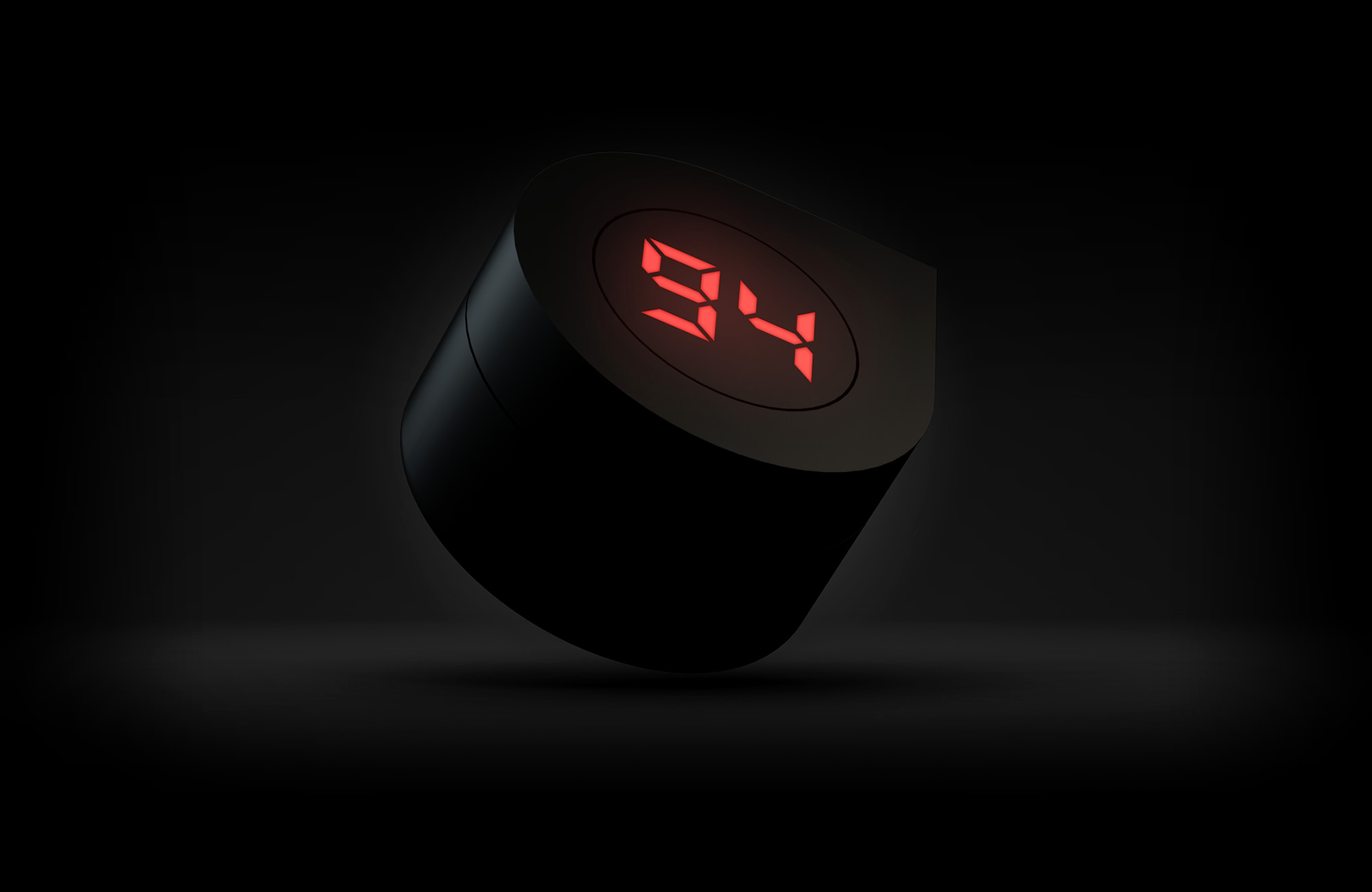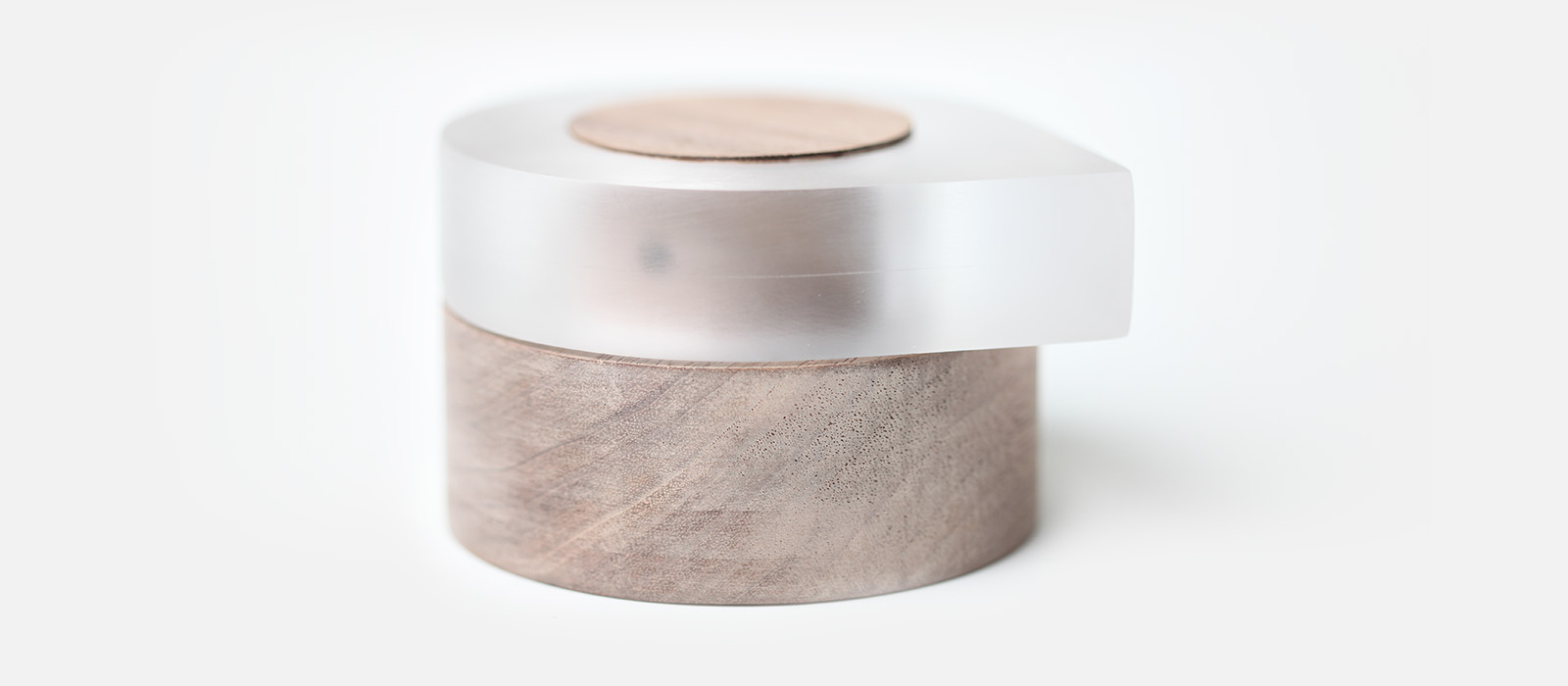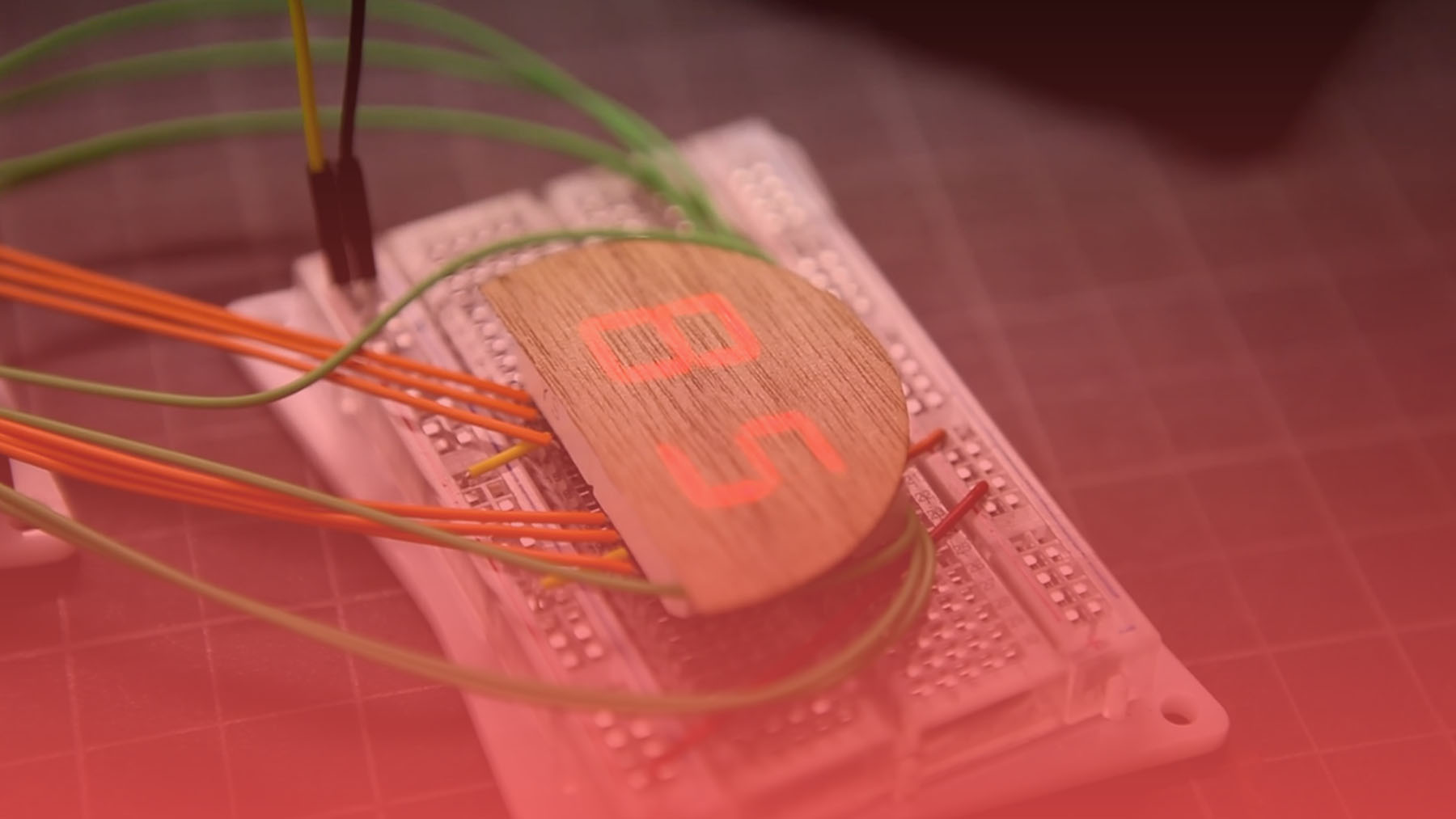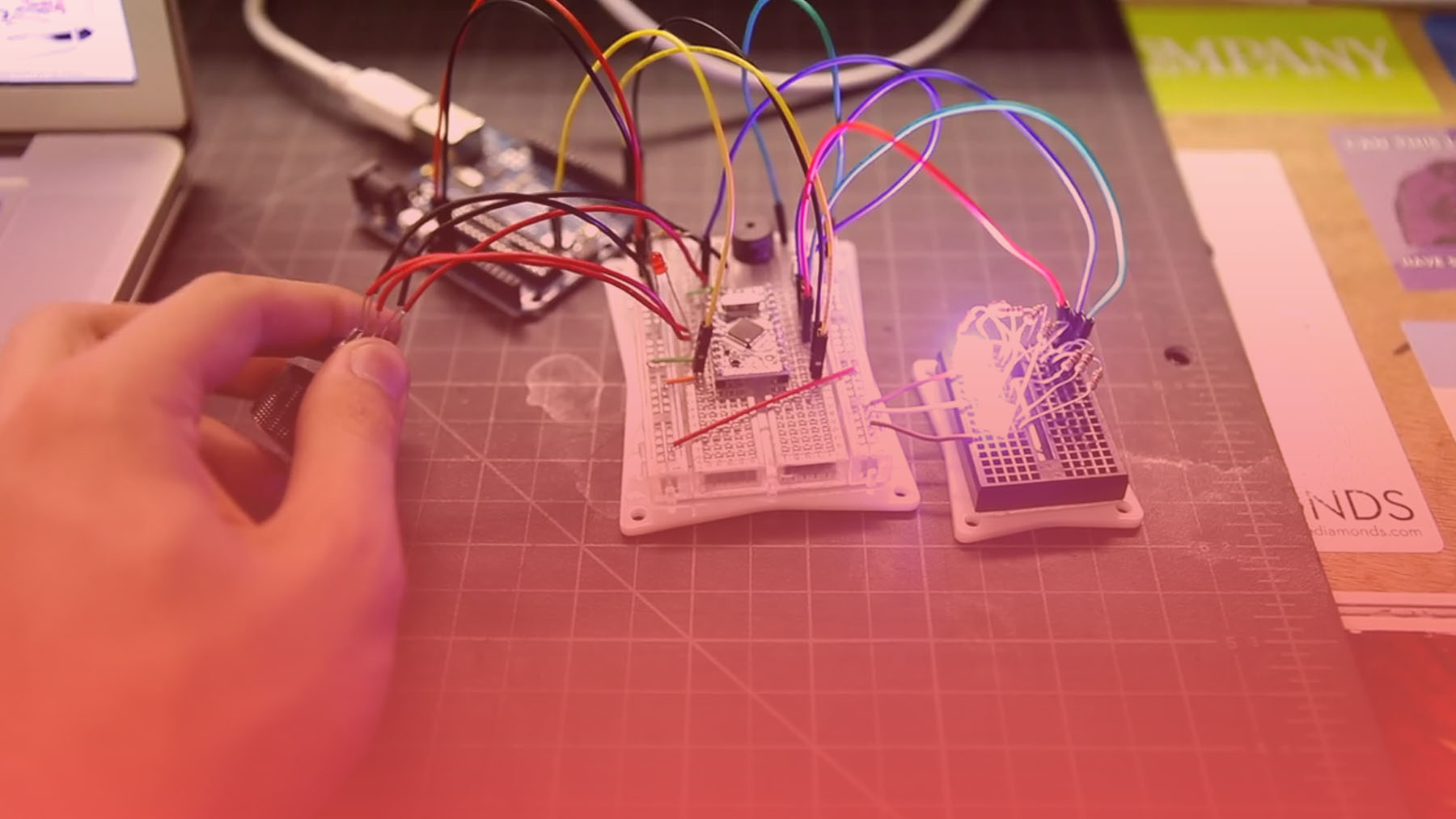

chroma
Digital kitchen timer that shifts from green to red
Fusing the benefits of flexibility from the digital world with the twist and click elegance of the analog, Chroma’s interface is as powerful as it is simple.

Fusing the benefits of flexibility from the digital world with the twist and click elegance of the analog, Chroma’s interface is as powerful as it is simple.












Chroma: In Progress I
Two seven-segment displays underneath veneer

The wooden circle in the center of Chroma is actually a hollowed cylinder covered with a thin piece of veneer. Underneath that veneer are two seven-segment displays that, when displaying numbers, shine through the veneer.
Multiple iterations of the circuit design were created as I learned more about the process and ran into space and efficiency issues. You can download the Eagle files of the two most significant versions of the boards on Github as well as the Arduino code written.
Chroma: In Progress II
Breadboarded prototype of the circuit

In the end, a working physical aesthetic prototype was created for Chroma that demonstrated the twist/click/glow interactions while also exhibited the desired aesthetic values.
